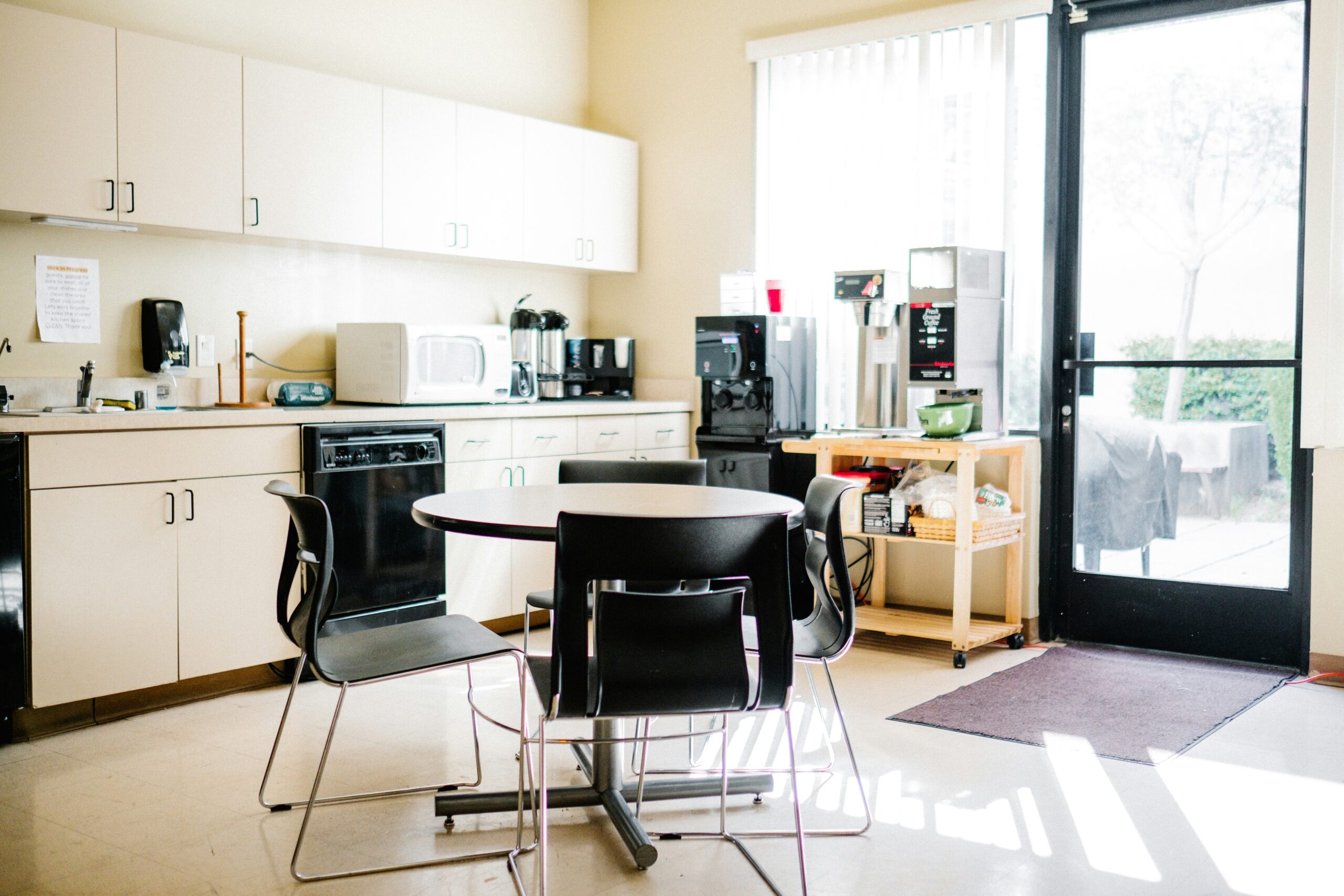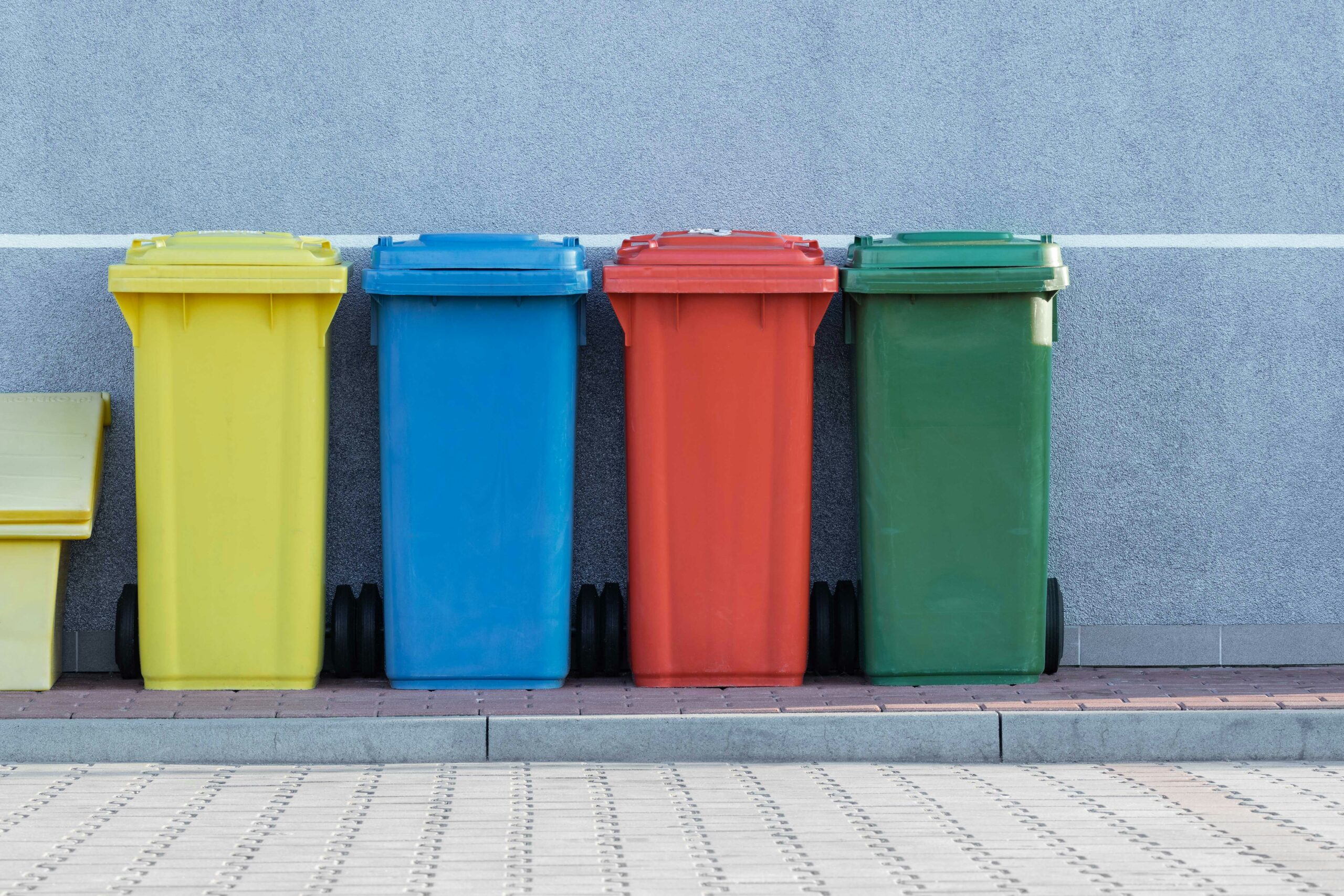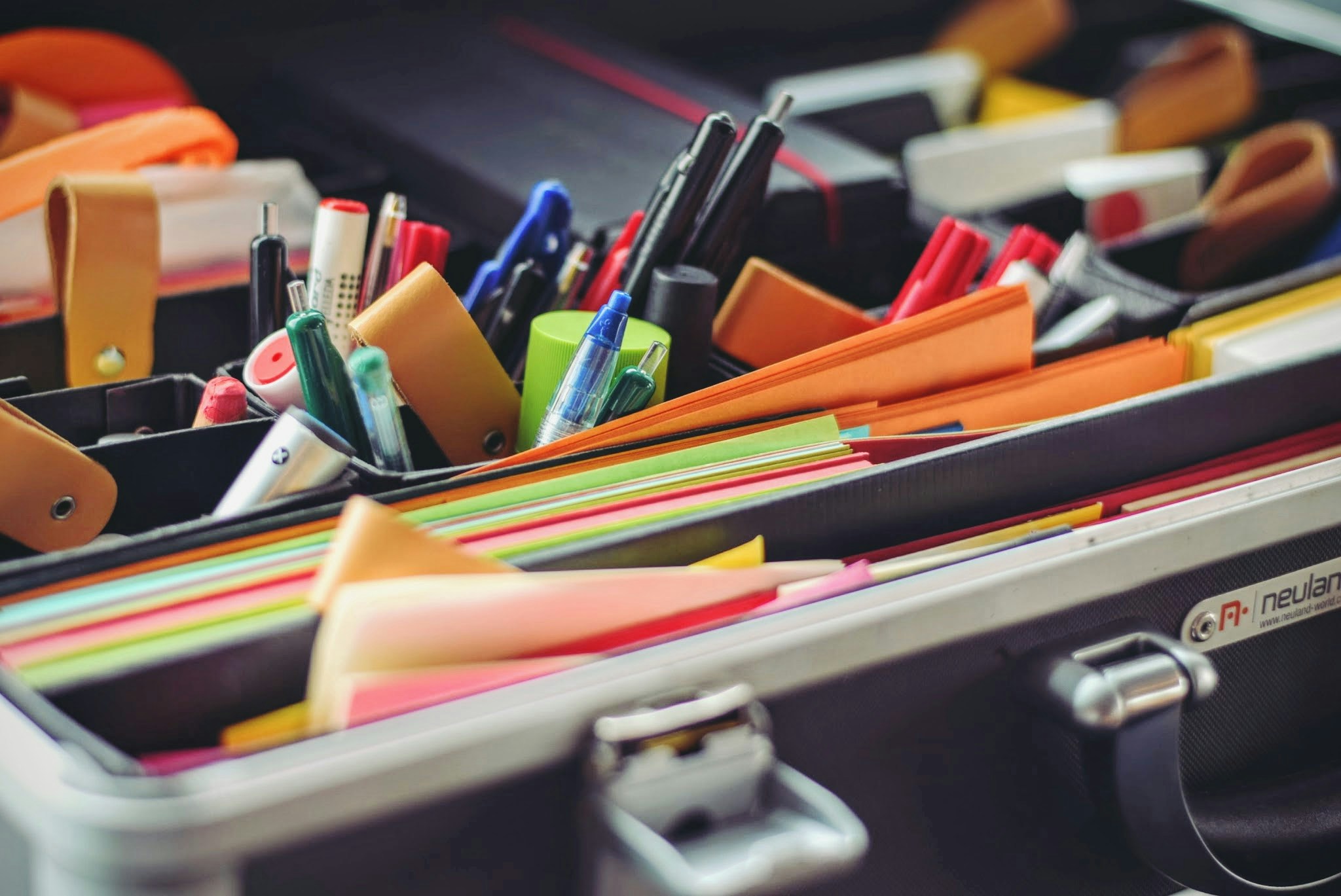Are you interested in creating a more sustainable and environmentally friendly workplace?
Transitioning to a zero waste office is a great way to start.
On average, office workers produce about 4.5 pounds of waste per day, which can quickly add up in larger companies. By implementing a few simple zero waste office tips and tricks, any size business can begin their eco-friendly journey.
Creating a zero waste office is an ongoing process that requires dedication and effort. However, the benefits are numerous. Not only can it help reduce waste and save money, but it can also improve productivity and create a more pleasant work environment.
In this article, we will provide you with a complete list of tips on how to create a zero waste office, including waste management, energy and electronics, zero waste office supplies, break room, and transportation.
Key Takeaways
- Implementing a zero waste office can help reduce waste, save money, and improve productivity.
- Zero waste office tips include waste management, energy and electronics, zero waste office supplies, break room, and transportation.
- Creating a sustainable workplace is an ongoing process that requires dedication and effort.
The Complete List on How to Create a Zero Waste Office
Creating a zero waste office is a great way to reduce your carbon footprint and protect the environment. Here are some tips to help you get started:
Waste Management

1. Recycling, Trash, & Compost Dividers
One of the most fundamental ways to create a low waste office is to separate materials into recycling, trash, and compost bins. This simple step can make a huge impact on minimizing office waste and carbon emissions.
By properly dividing waste, recycling, and compostable goods, we can help divert materials to their appropriate places. This also helps reduce the amount of food waste that goes to landfills, which generates toxic methane gases that are harmful to the environment.
2. Recycled Toilet Paper & Refillable Cleaning Products
Switching to eco-friendly toilet paper is an easy way to reduce plastic use in your office. Companies like Who Gives a Crap provide plastic-free, recycled solutions while also building toilets for communities in need with the profits.
Refillable cleaning products, like zero waste hand soap, are also great alternatives to conventional cleaning products that come in plastic bottles and contain harmful chemicals.
3. Use Compostable or Reusable Products at Events
Hosting events in the office can generate a significant amount of waste. To reduce this waste, consider using compostable or reusable products. Compostable products, such as plates, cups, and utensils, are made from plant-based materials and can be composted after use.
Reusable products, such as plates, cups, and utensils, can be washed and used again, reducing the need for single-use products. When choosing products for events, consider the environmental impact of each option and choose the most sustainable option available.
Energy & Electronics
4. Switch to Sustainable Lighting
Switching to sustainable lighting is a great way to reduce energy waste in your office. Energy-efficient LED sustainable light bulbs are an excellent alternative to traditional light bulbs. They last longer and use less energy, making them a great investment for your office.
LED bulbs last 25,000-35,000 hours, compared to a CFL’s 8,000 hours. Consider installing motion sensors or timers to ensure lights are only on when needed. This will help reduce energy consumption and save you money on your energy bill.
5. Install Solar Panels
Installing solar panels is an excellent way to reduce your office’s carbon footprint. Solar panels generate clean and renewable energy, which can power your office’s electricity needs. They can also help you save money on your energy bill. Consider installing solar panels on your office roof or in an area that receives plenty of sunlight.
6. Buy Ethical Electronics & Recycled Old Ones
Electronics account for a significant amount of e-waste generated each year. To reduce your office’s impact, consider disposing of electronics in a more responsible manner. Local libraries, electronics stores, and sometimes grocery stores have designated bins to ensure that precious metals don’t litter the Earth.
When it comes time to replace electronics, opt for more sustainable options. The ethical electronics market is growing and offers more sustainable options.
7. Use Electric Hand Dryers
Using electric hand dryers is a great way to reduce waste in your office. They are more energy-efficient than paper towels and can help you save money on your office supplies.
Electric hand dryers are also more hygienic than paper towels, as they do not spread germs or bacteria. Consider installing electric hand dryers in your office bathrooms to reduce waste and promote sustainability.
Zero Waste Office Supplies
8. Desks & Chairs
When it comes to zero waste office supplies, you may not think about desks and chairs, but they can be a significant source of waste. To reduce waste, consider buying second-hand furniture, which is often cheaper and has already been used.
If you need to buy new furniture, look for pieces made from sustainable materials, such as bamboo or reclaimed wood. Look for eco-friendly desks and chairs that are made from reclaimed hardwood and have non-VOC finishes. GREENGUARD Certification ensures that no harmful chemicals are used. You can also choose furniture that is easy to disassemble and recycle at the end of its life.
9. Refillable or Recyclable Pens & Markers
Pens and markers are essential office supplies, but they can also be a significant source of waste. To reduce waste, consider using refillable pens and markers. Lamy offers modern and minimalist refillable pens, while vintage fountain pens are also a sustainable option. For presentations, consider using aluminum whiteboard markers that offer replacement ink and fresh nib tips.
These pens and markers can be refilled with ink, reducing the need to dispose of them. You can also choose pens and markers made from recycled materials or that are recyclable at the end of their life.
10. Eco-Friendly Notebooks and Planners
Traditionally, many notebooks and planners contribute to deforestation and waste due to their paper and binding materials. However, a shift towards notebooks and planners made from recycled paper or alternative, sustainable materials like bamboo, hemp, or stone paper significantly reduces environmental impact.
These eco-conscious choices not only support the recycling industry, but also promote the use of less water and energy during production. Moreover, some innovative brands are now offering notebooks with erasable pages or digital planners that can be used indefinitely, further minimizing waste.
Offices can dramatically decrease their paper waste while still providing essential tools for their teams, by opting for these sustainable versions.
11. Recycled Paper
Paper is a significant source of waste in the office. To reduce waste, consider using recycled paper. Recycled paper is made from post-consumer waste and can be recycled again at the end of its life. You can also choose paper made from sustainable materials, such as bamboo or hemp.
Break Room

12. Compostable Tea Bags & Refillable Coffee
One of the easiest ways to reduce waste in the break room is by switching to compostable tea bags and refillable coffee. Instead of using single-use tea bags, opt for compostable ones made from natural materials.
You can also use a reusable tea infuser or loose tea leaves to make your tea. Similarly, instead of using disposable coffee pods, switch to refillable coffee pods or use a French press or drip coffee maker. This will not only reduce waste, but also save money in the long run.
13. Reusable Containers, Dishware, & Cutlery
Reduce waste by using reusable containers, dishware, and cutlery in the break room. Instead of using disposable plates, cups, and utensils, switch to reusable ones made from materials like glass, ceramic, or metal.
You can also encourage your coworkers to bring their own reusable containers for leftovers or snacks. This will not only reduce waste, but also promote a more sustainable and eco-friendly workplace.
14. Local & Sustainable Lunches
Another way to reduce waste in the break room is by promoting local and sustainable lunches. Instead of ordering takeout from fast-food chains or restaurants that use excessive packaging, encourage your coworkers to bring their own homemade lunches or order from local and sustainable restaurants.
This will not only reduce waste, but also support local businesses and promote a healthier and more sustainable lifestyle.
Transportation
15. Carpool, Bike, or Public Transport
Transportation is one of the biggest contributors to carbon emissions and pollution. Commuting to work alone in a car is not only bad for the environment, but it also increases traffic congestion and wastes time and money. You can make a difference by choosing alternative modes of transportation.
Carpooling with colleagues who live close to you is a great way to reduce your carbon footprint and save money on gas. You can also consider biking to work if you live within a reasonable distance. Biking is not only a sustainable and healthy option, but it also helps reduce traffic congestion.
Public transport is another eco-friendly option that can help reduce your carbon footprint. Taking a bus, train, or subway to work not only reduces emissions, but also saves you money on gas and parking. You can also use this time to read, work, or relax before starting your day.
In addition to these options, you can also consider working from home, if possible. This not only eliminates your commute, but also saves you time and money on transportation.
Final Thoughts on How to Create a Zero Waste Office
Creating a zero waste office can be a daunting task, but it is achievable with small changes. Incorporating the 5 Rs of zero waste—refuse, reduce, reuse, recycle, and rot—can help minimize your consumption of resources and be a part of a circular corporate economy.
To begin, start small by remembering your reusable coffee mug when doing the coffee run or by reducing paper usage. You can also encourage your coworkers to adopt zero waste practices by sharing this article with the green team.
Employers can also incentivize employees to reduce waste by organizing competitions or challenges. This not only helps reduce the carbon footprint of the office but also fosters a culture of sustainability and values that can be carried outside of the workplace.
Education is also important, and employers can provide training and resources to help employees adopt zero waste practices. This can include information on composting, recycling, and reducing waste.
By creating a zero waste office, you can not only help reduce the amount of waste that ends up in landfills, but also increase productivity and employee satisfaction. Small changes, every day, can make a big difference.
Frequently Asked Questions
How can you effectively reduce paper waste in an office?
Reducing paper waste is one of the most effective ways to start a zero-waste initiative. Here are some simple steps you can take to reduce paper waste in your office:
- Go digital: Encourage employees to use digital documents instead of paper. This can be done by using cloud-based software, e-mail, or other online tools.
- Print double-sided: Set printers to print double-sided by default. This can significantly reduce paper usage.
- Reuse paper: Encourage employees to reuse paper that has only been printed on one side. This can be done by creating a designated bin for scrap paper.
- Use recycled paper: Choose recycled paper for printing and office supplies.
What are some simple steps an office can take to start a zero-waste initiative?
Here are some simple steps an office can take to start a zero-waste initiative:
- Conduct a waste audit: Identify the types of waste that are generated in your office and develop a plan to reduce them.
- Set goals: Set measurable goals for reducing waste and track your progress.
- Educate employees: Educate employees about the importance of zero waste and provide them with the tools and resources they need to participate.
- Use reusable items: Encourage the use of reusable items such as coffee cups, water bottles, and lunch containers.
What are the benefits of a zero waste policy in a corporate environment?
Implementing a zero waste policy in a corporate environment can have several benefits, including:
- Cost savings: Reducing waste can lead to significant cost savings in areas such as waste disposal fees and purchasing.
- Environmental benefits: A zero waste policy can reduce the environmental impact of a company and help to preserve natural resources.
- Improved reputation: Companies that adopt sustainable practices are often viewed more favorably by customers, investors, and other stakeholders.
How can offices manage electronic waste responsibly?
Electronic waste, or e-waste, can be managed responsibly by:
- Recycling: Ensure that e-waste is recycled properly by working with a certified e-waste recycler.
- Donating: Donate working electronics to schools, non-profit organizations, or other groups that can use them.
- Reducing consumption: Encourage employees to use electronic devices for as long as possible and to purchase energy-efficient devices.
What strategies can businesses employ to minimize single-use items in the workplace?
Here are some strategies businesses can employ to minimize single-use items in the workplace:
- Provide reusable items: Provide employees with reusable items such as water bottles, coffee cups, and utensils.
- Eliminate single-use items: Eliminate single-use items such as plastic straws, utensils, and cups.
- Encourage waste reduction: Encourage employees to reduce their waste by bringing their own lunch and snacks in reusable containers.
Can you recommend eco-friendly alternatives for common office supplies?
Yes, here are some eco-friendly alternatives for common office supplies:
- Pens and pencils: Choose pens and pencils made from sustainable materials such as bamboo or recycled plastic.
- Paper products: Choose paper products made from recycled materials or FSC-certified paper.
- Cleaning supplies: Choose non-toxic and biodegradable cleaning supplies.
- Desk accessories: Choose desk accessories made from sustainable materials such as bamboo or recycled plastic.

I’m Chris, a passionate advocate for sustainability, sharing my journey and tips from our vibrant family farm. With a background rooted in zero-waste living and a heart committed to eco-friendly practices, I aim to empower others through my blog. Each post is a blend of personal experiences or a question I have once pondered, and practical advice for those looking to make sustainable choices in their daily lives. Join me in making every step a greener one, as we explore the joys and challenges of living sustainably together.



